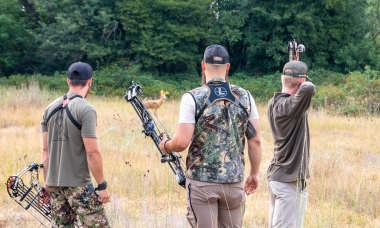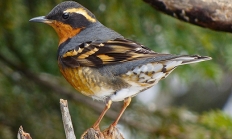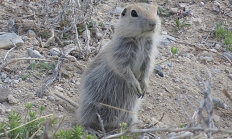
Search myodfw.com

COLUMBIA BIG GAME HUNTING December 4, 2025 Currently open Bear, Cougar ( Check current harvest numbers), coyote, controlled 600 series deer and 200 series antlerless elk. ( Check regulations for specific dates and units) Announcements, resources 2025 Big Game Hunting Forecast Big game harvest statistics - You'll find links to population, harvest and point summary reports that can help you decide what hunts to apply for next season. Please report elk with hoof disease - If you see elk showing signs of elk hoof disease, including lame or limping elk or elk with damaged, injured, missing or deformed hooves, please

Upper and Lower Bennett Dams are located southeast of the town of Stayton on the North Santiam River. Upper Bennett Dam is on the south side of Stayton Island and Lower Bennett Dam is on the north side.
The Pacific shrew is the only shrew in Oregon without a tine on the anteromedial surface of the first upper incisor but with a posteriomedial ridge visible in anterior view through the gap between the incisors. It is a large brown shrew with the third unicuspid smaller than the fourth. The species is often found in moist wooded areas with fallen decaying logs and brushy vegetation. It is endemic to Oregon and is distributed as two disjunct populations: one in the Coast Range from Cascade Head, Tillamook County, south to Coos Bay, Coos County and eastward to Philomath, Benton County
The vagrant shrew can be distinguished from all other congeners in Oregon by the combination of the upper unicuspids wider than long in ventral view. It is light medium brown on the dorsum, light pinkish-gray on the sides, and white on the venter, bases of hairs on all three areas are neutral very dark-gray. The tail is weakly bicolored (dark brown over white) in juveniles. The vagrant shrew occurs throughout the state except in the Columbia Basin. It tends to be more of a generalist than most Oregon shrews in terms of habitat affinities, nevertheless, it usually is found in
When glimpsed in the deep shadows of its preferred densely forested habitat, this secretive thrush resembles a plump robin. But a clearer view will reveal the distinctive fieldmarks of a dark breast band, orange eyebrows, and orange wingbars. As striking as its plumage is its unmistakable song: a succession of single drawn-out, ventiloquial notes, given at different pitches that pierce the fog and dense foliage of its favored haunts in lush coastal and montane old-growth forests. In Oregon, it breeds throughout the Coast Ranges and in the Cascades. It is a fairly common breeder in low-elevation hemlock and spruce forests

Willamette Trout Hatchery and the adjacent Oakridge Salmon Hatchery were combined in 1983 and operate today as Willamette Hatchery. The trout hatchery was constructed in 1922 and the salmon hatchery in 1911. The U.S. Army Corps of Engineers (USACE) rebuilt the salmon hatchery in 1952 to mitigate for fishery losses caused by Hills Creek, Lookout Point and the Dexter hydroelectric/flood control projects. The trout side was rebuilt between 1950 and ‘56. Today, Willamette Hatchery is used for adult holding/spawning, egg incubation and rearing of spring chinook and rainbow trout. In addition, both summer and winter steelhead are reared at this
The present facility was constructed in 1925, across the North Umpqua River from an earlier trout hatchery built in 1920. The hatchery was closed in 1975 due to low stream flows and high water temperatures, and was reopening in 1979 after extensive reconstruction. In 2012 a state of the art fish passage ladder was completed. It included a fish viewing window for Rock Creek basin fish inventory and a fish trap facility. The hatchery produces fall and spring Chinook, coho, summer and winter steelhead, and rainbow trout. The facility is used for adult collection, spawning, incubation, and rearing of Chinook


The Piute ground squirrel is the other of the two small gray ground squirrels without stripes or spots. In Oregon, it occurs south of Sheepshead and Cedar mountains in Malheur County. It is a species of the High Desert and commonly occurs in habitats in which the dominant shrub is big sagebrush, saltbush, or greasewood. It is commonly associated with rocky outcrops, levees, railroad embankments, ditchbanks, and sand dunes. Some occur in fencerows and edges of alfalfa and small-grain fields. These ground squirrels are usually active for three to five months each year. They emerge from their hibernacula in February

Cascade Hatchery was authorized under the Mitchell Act and began operating in 1959 as part of the Columbia River Fisheries Development Program – a program to enhance declining fish runs in the Columbia River Basin. The facility is used for egg incubation and rearing of coho.

Find the weekly statistics for waterfowl and upland game birds at Fern Ridge Wildlife Area.
Our Mission The Oregon Department of Fish and Wildlife (ODFW) Hunter Recruitment Program is dedicated to strengthening and growing Oregon's hunting and shooting sports community. We provide hands-on skills training, promote a culture of safety, ethics, and conservation, and foster a positive public perception of hunting and shooting sports. Our goal is to build confidence, knowledge, and skills for both new and seasoned hunters, supporting a lasting connection to Oregon's rich outdoor traditions. Workshops are offered statewide throughout the year. View and register for an upcoming event: Classes and W or kshops.

Clackamas Hatchery began operation in 1979 and is used for adult collection, egg incubation and rearing of spring Chinook and winter steelhead, rearing of coho and acclimation of summer steelhead.
